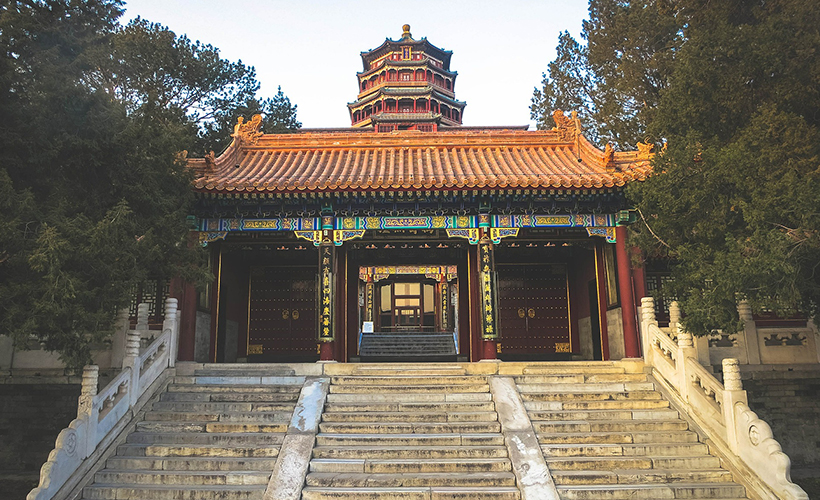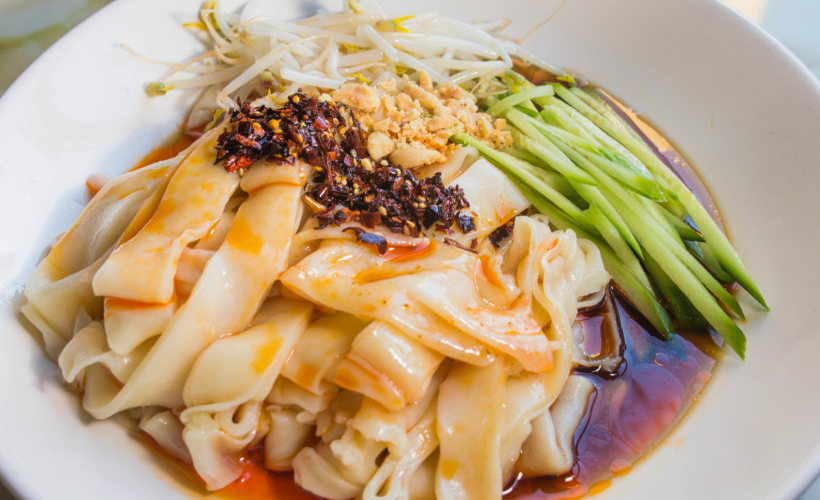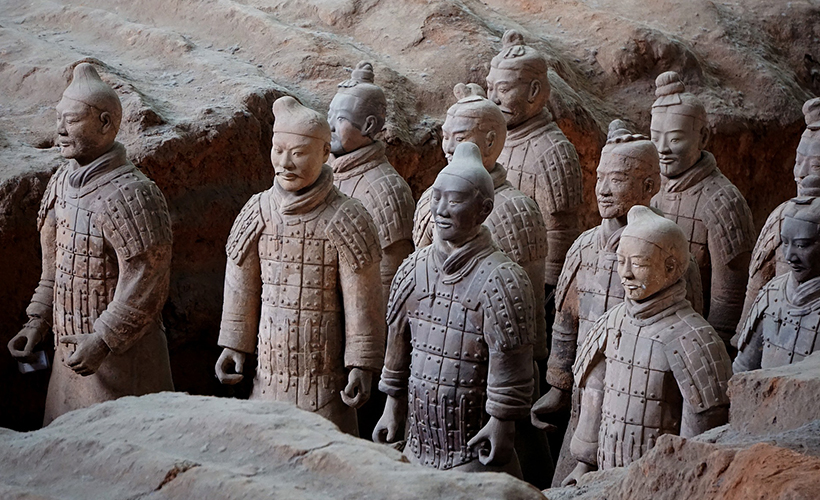
In 1974, villagers of Linton County near Xi’an were digging a well and came across some terracotta fragments and bronze weapons. This led to one of the largest archaeological discoveries to date – the terracotta warriors and mausoleum of Emperor Qin Shi Huang.
Qin Shi Huang was the first emperor of a unified China from 259 to 210BC and the founder of the Qin dynasty. The construction of his tomb – larger than the Great Pyramid of Giza in Egypt – began upon his ascension to the throne at age 13.
Needless to say, the tomb is vast. It’s believed that the Underground Palace is decorated with pearls and gems, and likened to palaces above ground. Booby traps were placed throughout the tomb to deter grave robbers.
It’s believed to have taken 720,000 labourers to complete, and many died while working on the emperor’s mausoleum. All these workers and barren royal concubines were entombed along with the emperor.
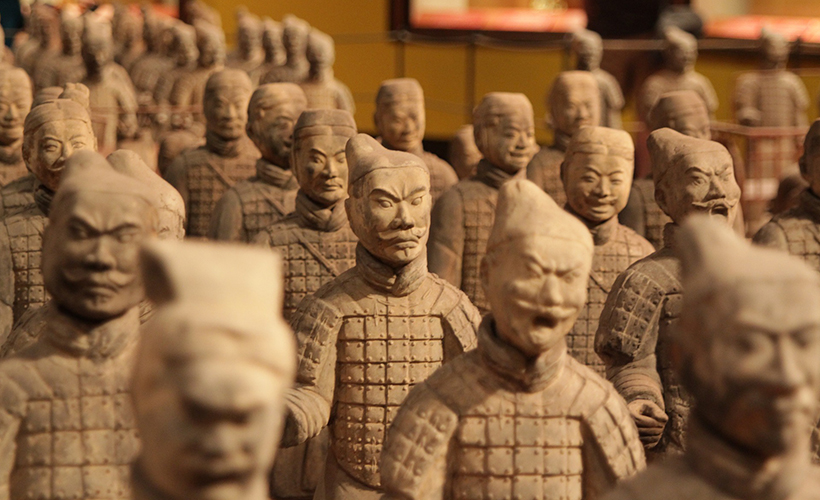
What’s most impressive, however, is the army the emperor took with him. By 1979, excavators discovered almost 9,000 statues of warriors made from terracotta, along with chariots and horses. While most of the artefacts are still underground, many have been restored and placed where they once stood.
The army was constructed to guard the tomb of Emperor Qin Shi Huang. While the faces were created from moulds, details were added by hand to make each face distinct. There are three pits filled with these warriors and numerous pits housing other artefacts.
Pit 1
This is the first pit discovered and the largest of the three. It holds 6,000 terracotta warriors and horses. The pit includes infantry, cavalry, and chariot warriors arranged in battle formation. Amazingly, each warrior is uniquely designed in terms of facial features, expressions, armour, weapons, hairstyles, and gestures – making them extremely life-like.
Excavation works discovered charcoal in the pits and researchers believe that an overlord set fire to the pit during the West Chu period (between 232-202 BC). This resulted in some of the artefacts being destroyed. A large arched hall was built over the pit in 1976, and the area was made open to the public in 1979.
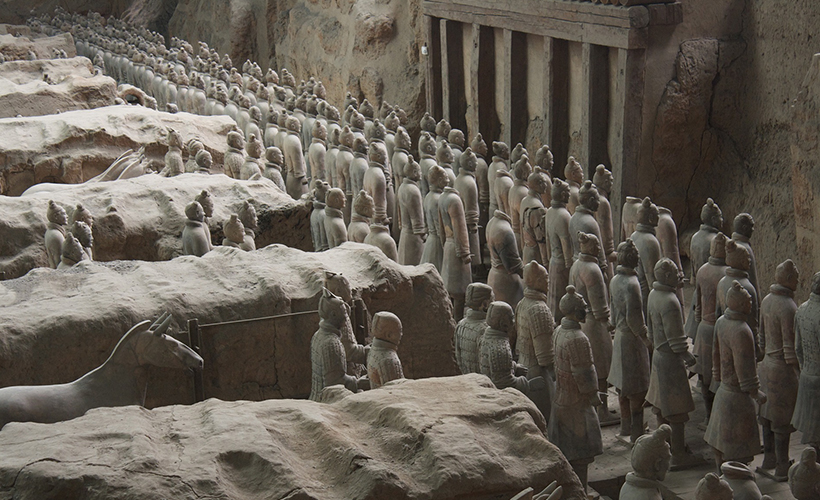
Pit 2
This area hosts a wider variety of warriors, ranging from infantry to cavalry, chariot warriors to archers. Only about a sixth of this pit has been excavated, with the remaining area partially exposed, revealing the remains of wooden shelters. The warriors of Pit 2 are arranged in more complex battle formations than those of Pit 1.
Excavators estimate that the pit holds approximately 1,300 warriors and horses, 80 war chariots (64 of which are pulled by four life-sized terracotta horses), and thousands of bronze weapons. Here, visitors can see the terracotta general, kneeling archers, and cavalry warriors.
Pit 2 was discovered in 1976 and opened to the public in 1994. There’s an exhibition hall next to Pit 2 that showcases cultural relics and unearthed weapons. In 1999, excavators uncovered coloured warriors. This discovery includes the famous green-faced warrior.
Pit 3
This is the smallest of the three pits, but what makes it special is that it served as the headquarters of the terracotta army. The pit can be divided into three sections: the chariot-and-horse section, and the northern and southern wings. It’s believed that the northern wing was used to pray for victory while the southern wing served as a meeting room to discuss military tactics. A total of 68 terracotta warriors were excavated from Pit 3, but many of them are missing their heads. Pit 3 also holds many gold, stone, and bronze decorations along with bronze weapons.
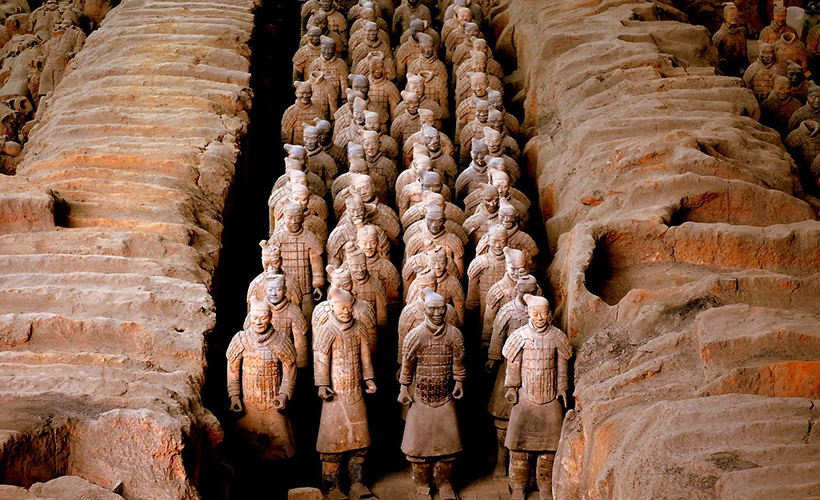
Discovered in 1976, this pit is fully excavated and was opened to the public in 1989. This part of the tomb also has a special area dedicated to the emperor – the Hall of Historical Relics of Emperor Qin Shi Huang’s mausoleum. Here, visitors can see two bronze chariots and horses that were uncovered in 1980. The chariots were meant to serve Emperor Qin Shi Huang in the afterlife and are half-size scale models. The horses and chariots have intricate details that include gold and silver pieces, and the chariots are painted in vibrant colours.
Excavators have discovered over 600 pits in the area, each holding accessories that they believe that the Emperor chose to take with him to the afterlife. While some of the pits are still being excavated, a few are open to the public. The pits also contain civil official figures, bronze aquatic birds, stone armour and helmets, acrobatic figures, and bronze chariots and horses.
The grand tomb in which the Qin Terracotta Warriors stand is an impressive sight to see, and was a vast undertaking, especially during that era. However, one can say that it’s a final resting place befitting the man who constructed the Great Wall of China.

